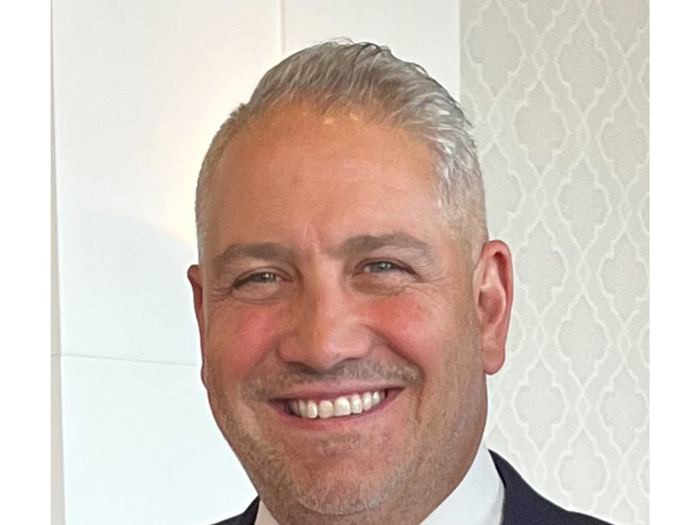The Future of Comp
Thought Leaders on the Present and Future of Workers’ Comp

Medical advancements and their associated costs, treatment guidelines, and the Affordable Care Act are among the issues weighing on the minds of workers’ comp practitioners this year. WorkersComp Forum spoke with several industry experts who shared their insights about the upcoming challenges and trends facing the system.
Innovation and Technology
“It’s becoming extremely clear that technology is progressing much faster than ever before,” said Jeffrey Austin White. “The rate of technological advancement has now been demonstrated to be exponential.”
White, the newly named director of Innovation at Accident Fund Holdings, Inc., is tasked with identifying opportunities for the insurance carrier to generate revenue and improve operations “while leveraging solutions backed by research, collaboration and state-of-the-art technology,” according to a statement on the company’s website. The staggering pace of technological advancements is being seen in the workers’ comp space with such things as 3-D printing.
“Most people last year said it was a hobby,” White said. “Today, at the recent Computer Electronics Show in Las Vegas people came to market with printers using both metal and plastic — vendors demonstrated working machines that were built in a matter of hours.”
Such achievements have the potential to revolutionize medical devices and the way medical care is delivered to injured workers. Consider the possibilities of digital health.
“It is absolutely one of the greatest transformations in health care right now,” said Kimberly George, senior vice president, senior healthcare advisor for Sedgwick. “One reason is, if we want consumers to be engaged in their wellness and health care, we have to offer new ways for them to be involved; we need them to actively participate in their treatment.”
Among the digital health developments are wearable devices that allow injured workers — and their physicians — to monitor their chronic conditions, or fitness and recovery from an injury. Another use is a digital health tool around medication adherence.
“Think of pharmacy and the lack of compliance or wasted medications,” George said. “There’s a whole realm of medication adherence health tools.”
New medical advancements are creating exciting opportunities to help injured workers recover more quickly. However, industry practitioners say it’s a double-edged sword.
“Medical advances are prolonging lives and increasing function. That’s wonderful,” said Mark Walls, vice president of communications and strategic analysis for Safety National. “But it also increases costs.”
As Walls pointed out, advancements are allowing people with catastrophic injuries to live longer and achieve better function through superior prosthetics. But it potentially creates reserving problems.
“These claims used to top off at $5 million, and a $10 million claim was rare. Now $10 million is becoming more the norm,” Walls said. “Medical advances mean people live longer. The claim tail for total disability is slowly increasing over time.”
Weighing the obvious advantages of scientific developments against the costs is a delicate balance. It’s an issue that the experts are considering carefully.
“Certainly we’ve seen many requests for 3-D prosthetics. While these were being discussed and piloted in the early part of 2014, today they really are here,” George said. “While we need to see how such technology will impact cost and utilization, we want to make sure they can be deployed because these devices may be able to improve the injured worker’s overall health and wellbeing.”
Another example of health care technology coming onto the scene is the exoskeleton that allows paraplegics to stand upright. Despite the benefits, payers are concerned about the costs for such equipment.
“If a physician says it is necessary and appropriate, we are expected to pay for the treatment, the state laws determine this,” White said. “But who determines the price? The manufacturer, distributor or even the medical provider. The going rate for a robotic exoskeleton is anywhere from $70,000 to $150,000 per unit.”
As White explained, devices such as the exoskeleton raise many concerns. “We are monitoring new technologies that have significant potential to impact our business within the next five years. The big questions are how to determine their effectiveness, their costs, and how to reserve appropriately.”
Medical Treatment Guidelines
Increasing medical costs, along with improved outcomes, are among the reasons many states have adopted medical treatment guidelines in recent years. But research among multiple states shows there are wide variances.
“Medical treatment guidelines are a metaphor for what is appropriate care,” said Richard Victor, executive director of the Massachusetts-based Workers Compensation Research Institute. “We and others have done plenty of research that shows physicians in different parts of the country — or city — answer that question very differently. They can’t all be correct.”
Part of WCRI’s focus in 2015 will be to continue that research and “help educate providers on how different they may be from the norm and evaluate the things states are doing to try and improve the quality of care,” Victor said.
The medical treatment guidelines come in many different forms. In addition to those developed by the American College of Occupational and Environmental Medicine and the Official Disability Guidelines published by the Work Loss Data Institute, states like Colorado have developed their own guidelines. Other states use a hybrid of the existing ones.
States are increasingly refining their guidelines in an effort to provide more consistent care to injured workers, and rein in costs. “I also have begun to hear more and more states thinking about fee schedules that are tied to prices paid by commercial/group health insurers rather than by Medicare,” Victor said.
Victor and others said more states are also looking at implementing drug formularies to identify acceptable medications; i.e., those that will be readily paid through the workers’ comp system.
Texas, for example requires preauthorization for certain medications in the workers’ comp system — mainly opioids and others more prone to abuse. A WCRI study based on information from the Texas Department of Insurance indicated a decrease of 67 percent in new claims with non-formulary drugs that required preauthorization between 2010 and 2011. Prescriptions written for non-formulary drugs dropped by about 70 percent, and non-formulary drugs’ share of the total prescription drug costs for new claims decreased by more than 80 percent. Among the states that have taken notice is California.
“We are hearing discussions about the formation and possible implementation of a drug formulary,” said Alex Swedlow, president of the California Workers’ Compensation Institute. “Our recent study modeled what might happen if the current mix and price of pharmaceuticals used in California were subject to either the Texas or Washington State formulary. The results showed that the California workers’ comp system could save up to 50 percent, or $500 million off its $1.2 billion a year spend.”
While the experts see the changes to, and focus on treatment guidelines and formularies as a positive trend, some are troubled by the politics involved. “I don’t accept the fact that human anatomy is different in Florida than California, or any other state,” Walls said. “We should have universally adopted treatment guidelines, like ODG, rather than trying to develop state-specific guidelines. ODG have been developed by leading experts. They are updated frequently. State-based guidelines are often influenced by politics.”
The guidelines are generally geared to evidence based medicine, which uses scientific research to improve consistency in decision making among medical providers. But some physicians and others say EBM is a ‘cookie cutter approach’ that limits providers’ ability to make the best decisions for their patients, based on their education and experience.
“A big focus of my ongoing oversight is going to be how the company can better utilize evidence-based medicine guidelines,” White said. “I think these guidelines have been underutilized and we can leverage them with good decision-making and the right expertise to really ramp up our quality of care, completely change the way we make decisions and how we facilitate outcomes measurements.”
Despite the guidelines, White said most states mandate that payment must be made when a provider decides what is “necessary and appropriate treatment.” He thinks there should be some additional level of oversight to avoid the large diversity in treatment patterns.
“We don’t want to look over a physician’s shoulder,” White said. “But if a doctor wants to use a different treatment, particularly one we have never seen before, let’s find out why. We can’t just be expected to pay for it, especially when it endangers the patient. That’s how we got to where we are in workers’ comp with opioids and physician dispensing.”
White would like to get state legislatures involved in the discussion and create a dispute process based on medical research and evidence based guidelines. In this way they can provide a more cost effective and efficient way to negotiate treatment plans that deviate from the standard of care.
“The problem is, in today’s world, whatever the physician decides at whatever cost, regardless of whether it’s ethical or safe, carriers are generally expected to pay and patients have the burden of living the rest of their lives with the outcome. It’s really the outlier stuff we are most worried about today,” White said.
Physician Dispensing
The issue of physician dispensing of medications from their offices has caught the attention of many in the industry of late. Reports of physician-dispensed medications that cost exponentially more than the same drug dispensed by a pharmacy led many states to adopt legislation to hold down the costs.
Despite those efforts, the cost issue may not be alleviated. Additionally, there are concerns about whether injured workers may be put at risk because of physician dispensing. WCRI has been on the forefront of research into the issue and just released a new study.
“The study raises a question about whether these reforms are sustainable and the finding that there are very creative opportunities to still get much, much higher prices if you are a physician dispensing even with the current reforms,” Victor said. “We’ve done studies in the last year that show if the reforms are successful, prices are still 20 percent to 30 percent higher because pharmacies grant discounts to pharmacy benefit managers that physicians don’t get. So this is on top of all that.”
According to WCRI’s research, physician dispensers in Illinois and California have started to prescribe and dispense common medications at uncommon strengths. So, for example, where a medication may be commonly prescribed in dosages of 5- or 10-milligrams, physicians are dispensing them at 7.5 milligrams.
Because there is a “new manufacturer” involved, the prices of the new strength medications are significantly higher than those of the commonly prescribed dosages. The new strength versions of the medications have taken over a large chunk of the market share among physician dispensers in both states.
“When a new strength comes to market and gets 40 percent market share of physician dispensed medications, either it is superior clinically, or it’s more of the same,” Victor said. “And if it’s superior clinically then I wish the physician dispensers would tell the other physicians because they are not using it at all.”
Mental Health
Another emerging issue and one that is front and center for Sedgwick’s George is that of well-being, especially mental health. She said members of Congress are proposing federal legislation on mandatory mental health language that will be part of the Affordable Care Act.
“It’s an area that is definitely at the forefront and being considered by politicians, employers and health based companies,” George said. “An investment in mental health is an investment in health and wellbeing.”
George, who was invited by former First Lady Rosalynn Carter to attend her 30th Annual Symposium on Mental Health Policy, said it’s an issue that employers need to address in the workplace. “Whether mass shootings or continual workplace absences, mental health issues are impacting virtually every employer in the country today. We have to begin highlighting mental health across the entire health spectrum,” she said. “We need to determine how to identify employees with mental health concerns early on so they can get the care, advocacy and support they need, whatever that might be, in or out of work. It’s a huge issue for employers. It affects productivity as well as their costs.”
Echoing George’s comments was Safety National’s Walls. “Employers are realizing the importance mental health plays in their workforce,” he said. “They are slowly starting to see a wellness revolution. It’s not about incentives for knowing your blood pressure but focused on the whole person and the importance of managing every aspect of this. I for one welcome this.”










